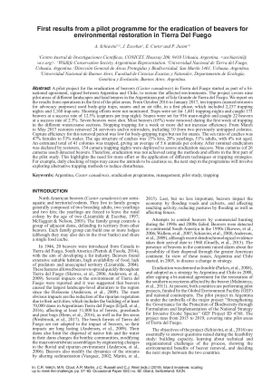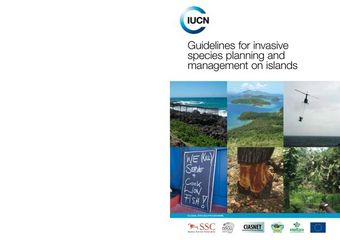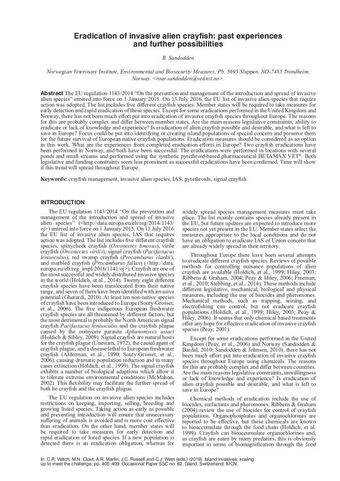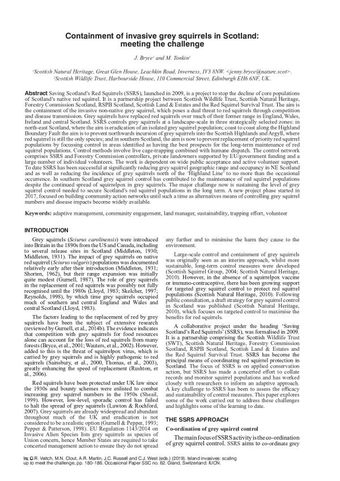Island invasives: scaling up to meet the challenge. Proceedings of the international conference on island invasives 2017
- Description:
- A pilot project for the eradication of beavers (Castor canadensis) in Tierra del Fuego started as part of a bi-national agreement, signed between Argentina and Chile, to restore the affected environments. The project covers nine pilot areas of different landscapes and land tenures in the Argentinian part of Isla Grande de Tierra del Fuego. We report on the results from operations in the fi rst of the pilot areas. From October 2016 to January 2017, ten trappers (named restorers for advocacy purposes) used body-grip traps, snares and an air rifle, in a first phase, which included 2,237 trapping nights and 1,168 trap-sets. Shooting eff orts were not monitored. Traps were set for 1,401 trapping-nights and caught 175 beavers at a success rate of 12.5% (captures per trap night). Snares were set for 936 snare-nights and caught 22 beavers at a success rate of 2.3%. Seven beavers were shot. Most beavers (65%) were removed during the fi rst week of trapping in the different watercourse sections. Stopping trapping for a week or more did not increase efficiency. From March to May 2017 restorers removed 24 survivors and/or reinvaders, including 10 from two previously untrapped colonies. Capture efficiency for this removal period was low for body-gripping traps but not for snares. The sex ratio of catches was 47% females to 53% males. The age structure of catches was 15% kits, 29% yearlings, 51% adults, with 4% not aged. An estimated total of 41 colonies was trapped, giving an average of 5.6 animals per colony. After nominal eradication was declared by restorers, 154 camera trapping nights were deployed to assess eradication success. Nine cameras (of 26 cameras used) detected beavers. Therefore, eradication was not achieved using the methods and eff orts in the first part of the pilot study. This highlights the need for more eff ort or the application of different techniques or trapping strategies. For example, daily checking of traps may cause the animals to be cautious so, the next step in the programme will involve exploring alternative trapping methods to reduce disturbance.
- Display date:
- 2019
- Collections:
- Secretariat of the Pacific Regional Environment Programme (SPREP)
- Publisher:
- IUCN, International Union for Conservation of Nature
- Content partner:
- Secretariat of the Pacific Regional Environment Programme (SPREP)
- Availability:
- Not specified
-
Copyright status: All rights reservedFind out more about what you are able to do with this itemThis item is all rights reserved, with means you'll have to get permission from Secretariat of the Pacific Regional Environment Programme (SPREP) before using it. For more information, please see our use and reuse page.What can I do with this item?Non-infringing useNZ copyright law does not prevent every use of a copyright work, and this item may be hosted by an international institute or organisation. You should consider what you can and cannot do with a copyright work.No sharingYou may not copy and/or share this item with others without further permission. This includes posting it on your blog, using it in a presentation, or any other public use.No modifyingYou are not allowed to adapt or remix this item into any other works.No commercial useYou may not use this item commercially.
Related items
Welcome and warm Pasifik greetings
The information on this site has been gathered from our content partners.
The names, terms, and labels that we present on the site may contain images or voices of deceased persons and may also reflect the bias, norms, and perspective of the period of time in which they were created. We accept that these may not be appropriate today.
If you have any concerns or questions about an item, please contact us.



